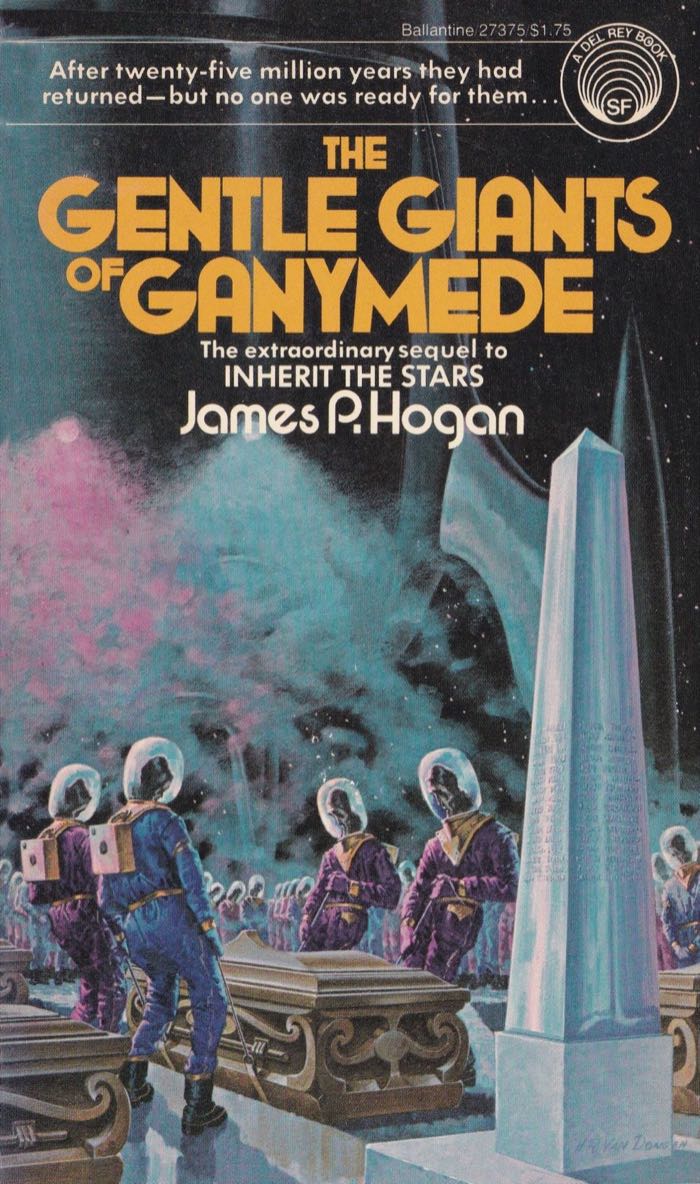The Gentle Giants of Ganymede
Series: Giants 2
Reviewed date: 2006 Aug 26
Rating: 3
246 pages
The Gentle Giants of Ganymede is a worthy sequel to Inherit the Stars. It also has huge spoilers, so if you intend to read and enjoy Inherit the Stars, don't read The Gentle Giants of Ganymede first.
In Inherit the Stars, explorers on Ganymede find a crashed alien spaceship that has been buried for millions of years. In The Gentle Giants of Ganymede, scientists are trying to piece together everything they can learn about the humanoid aliens and the technology of their spaceship. While they're doing this, an alien spaceship arrives in the solar system: it's the Ganymeans. Instead of studying a dead relict, the scientists make first contact with the alien race.
The Ganymeans are humanoid, about eight feet tall, and are surpisingly like men in physical form. But in their thoughts and actions they are unhuman. The Ganymeans are uncompetitive, cooperative, agreeable, and egoless. To argue or fight amongst themselves is beyond their comprehension. The gentle cooperative nature means they do not understand capitalism. Their economy is laissez faire, but in practice operates much like idealized communism. This works because it is natural to them. The Ganymeans cannot comprehend ruthless competition, and they always work for the good of the community.
What separates The Gentle Giants of Ganymede from lesser books is the logical explanation that Hogan offers for the Ganymeans' gentle attitude. Other authors have introduced alien races that have outgrown their old warlike competitive ways, as a moral lesson to humanity that it needs to outgrow its strife. But Hogan stays away from this moralizing. He develops an entirely logical model of evolution that naturally selected gentleness and cooperation as the most important traits for survival. Whereas on Earth, the most violent and competitive creatures survive, on the Ganymeans home world, an accident of evolution lead to a situation where violence and competitiveness are negative traits that bred themselves out. I cannot explain further without spoiling the plot, but Hogan is convincing.
